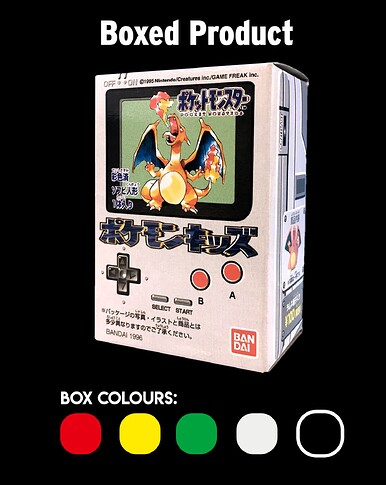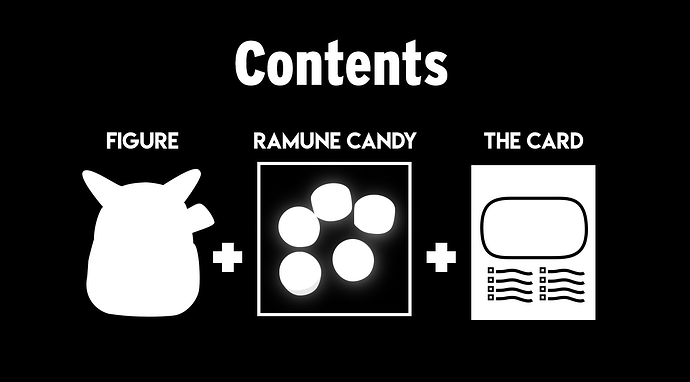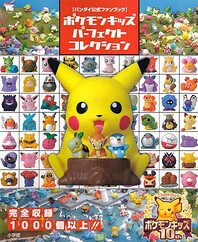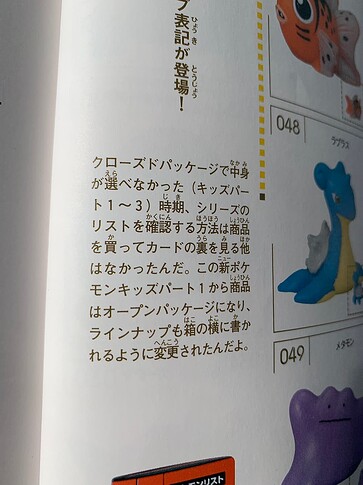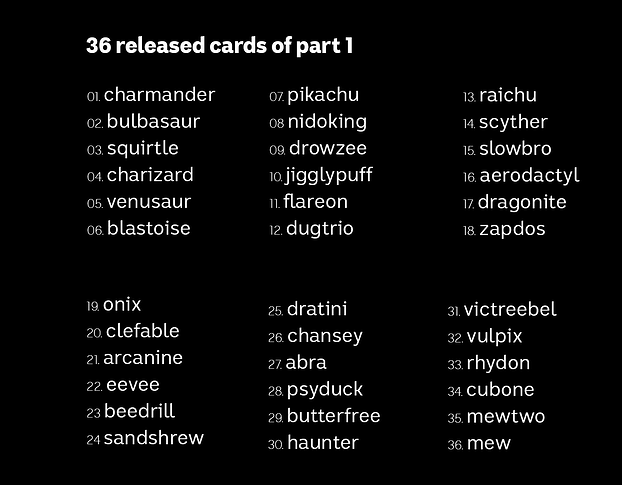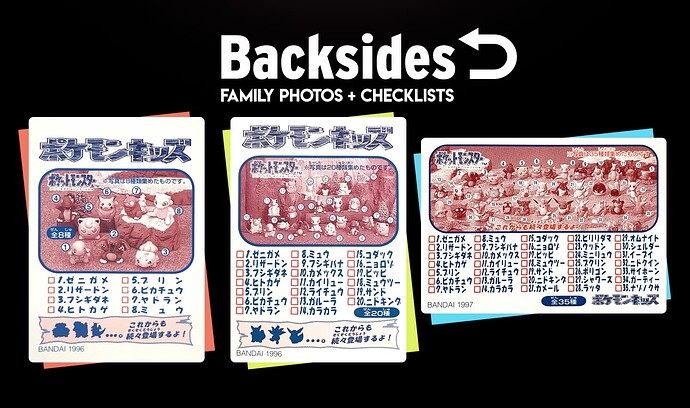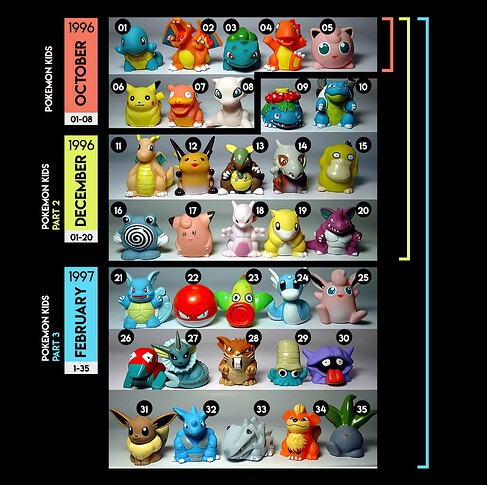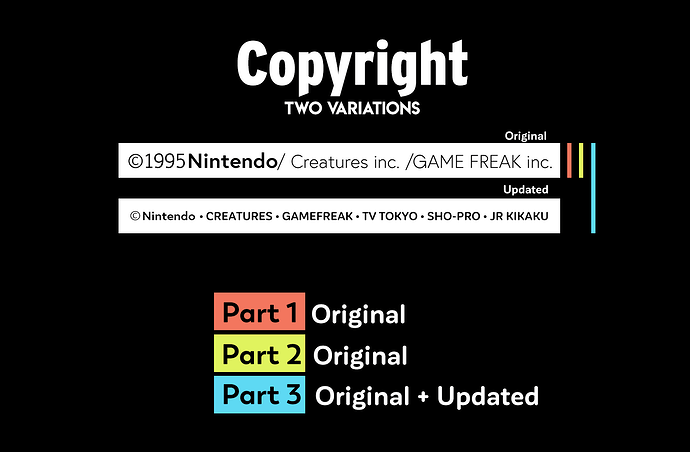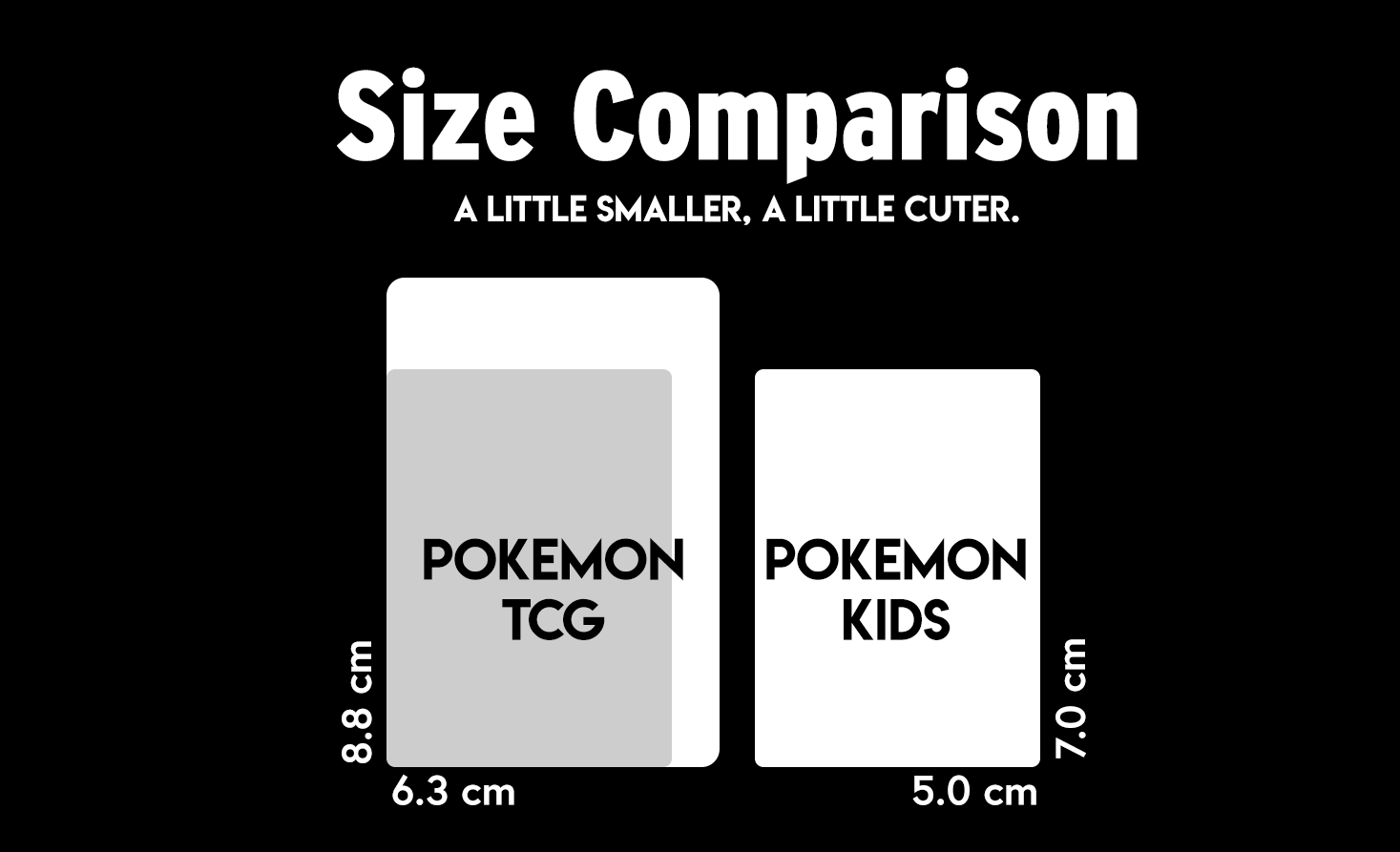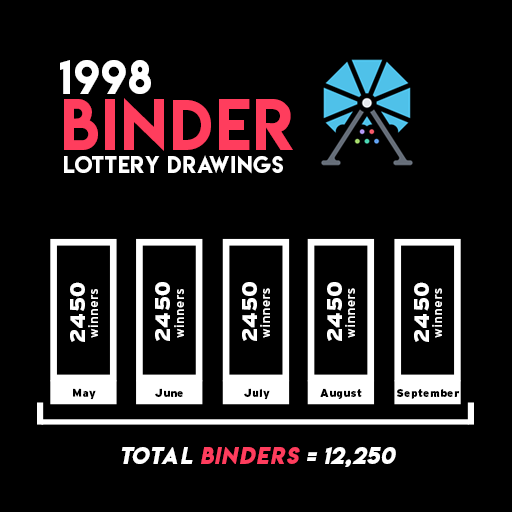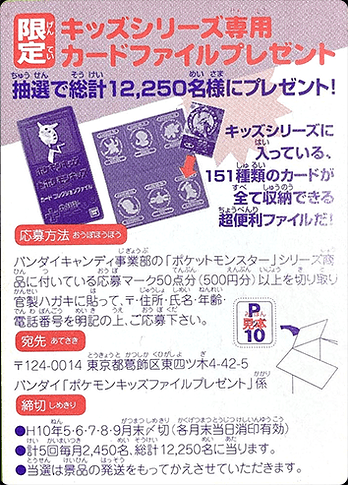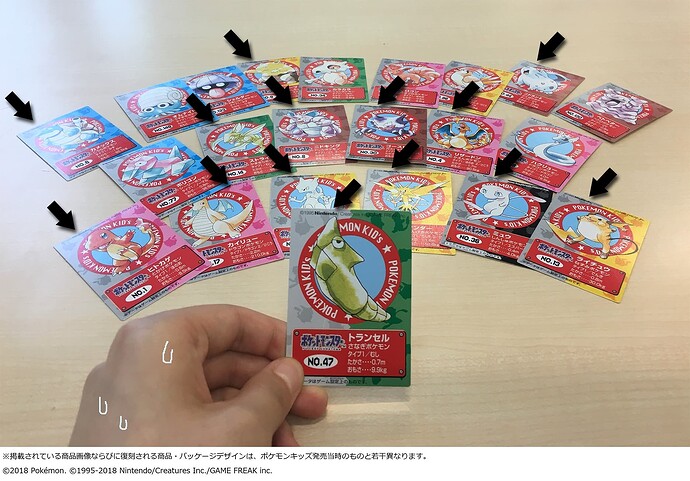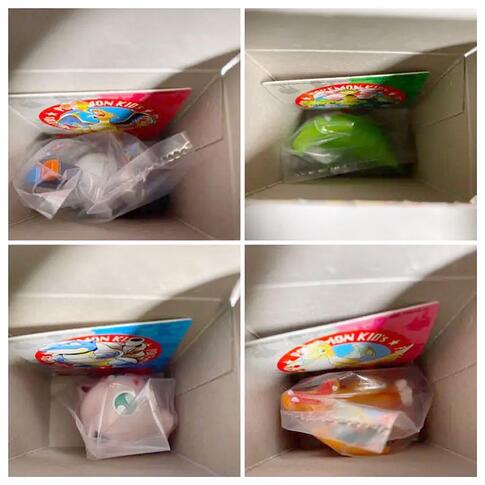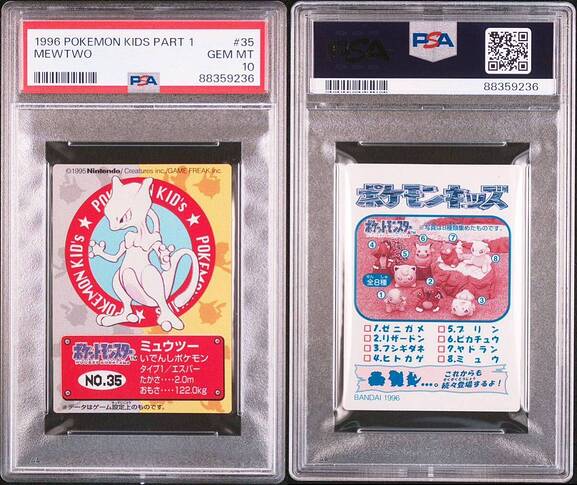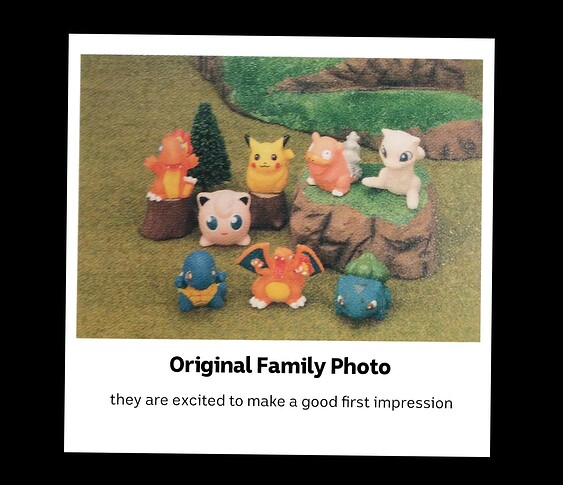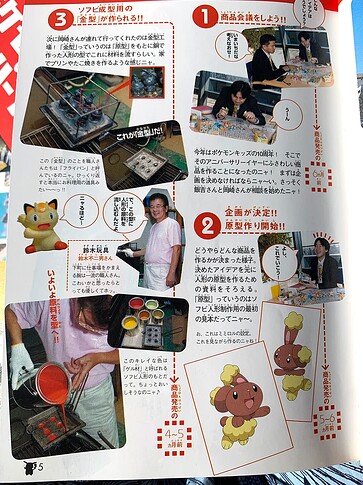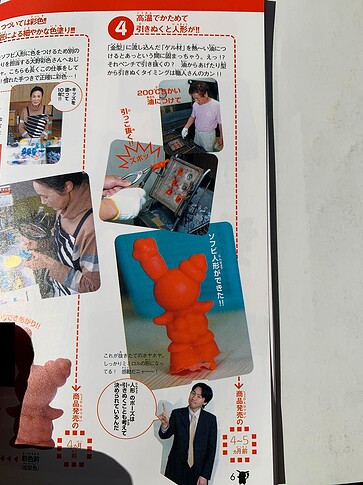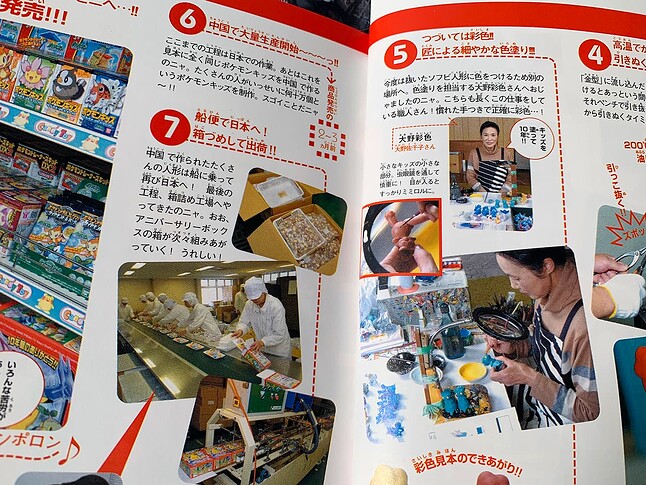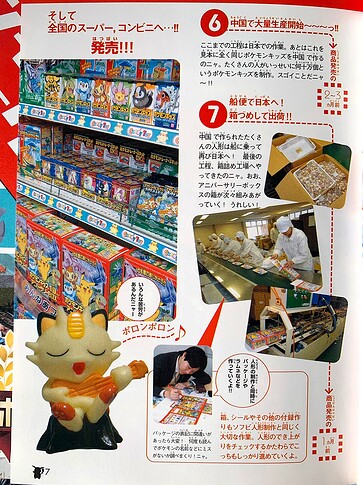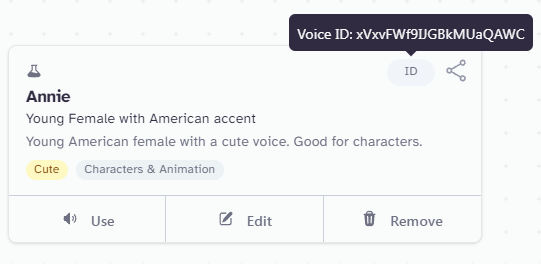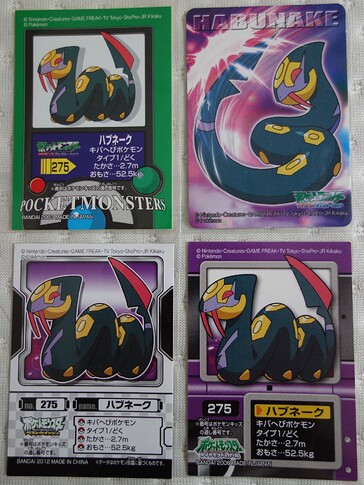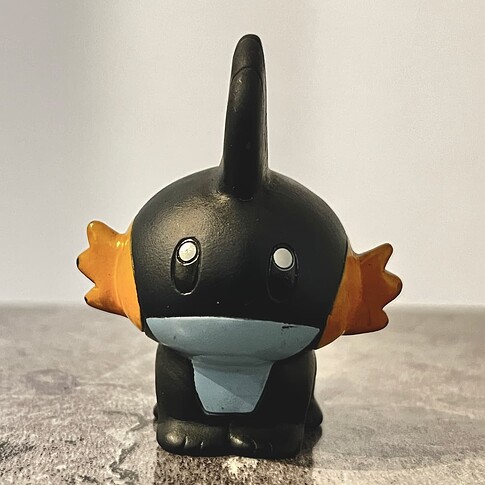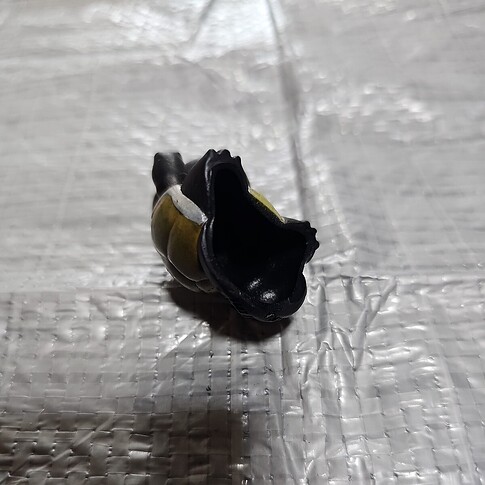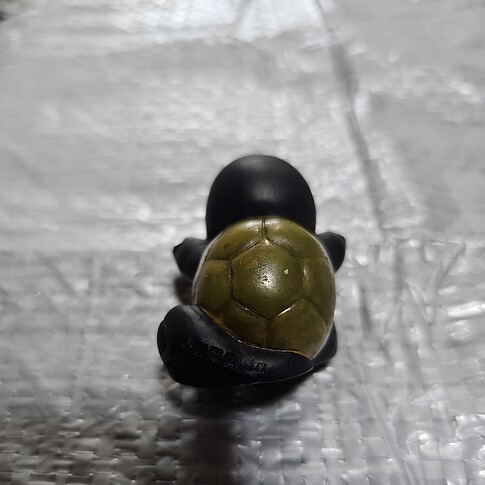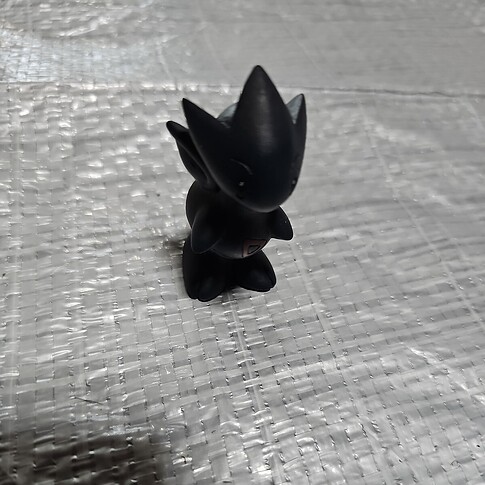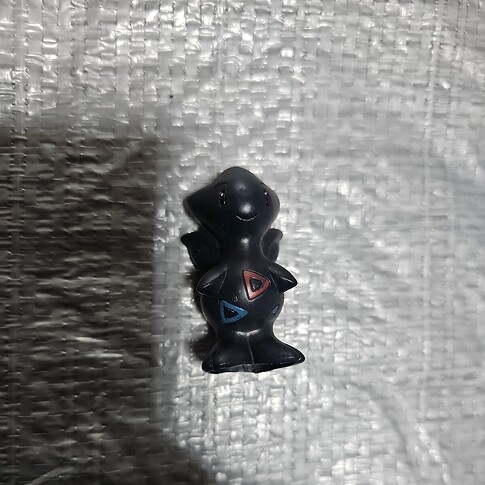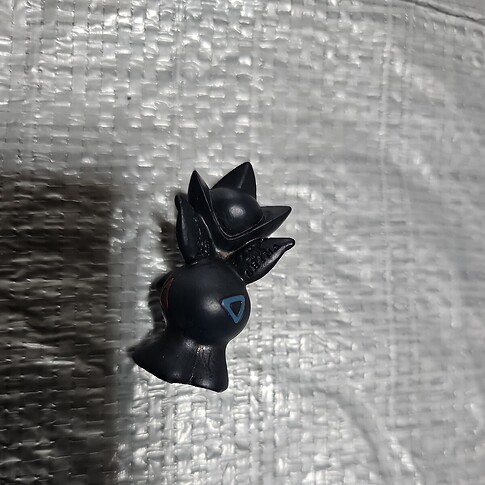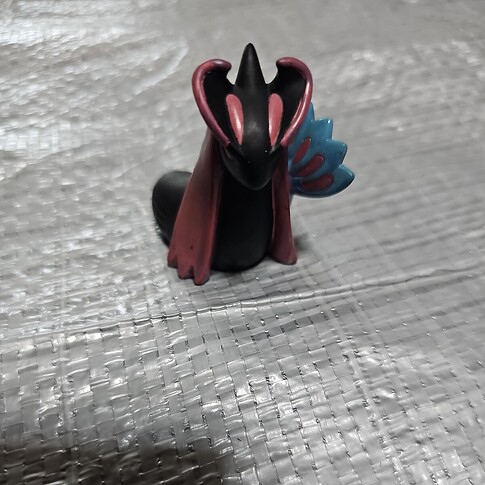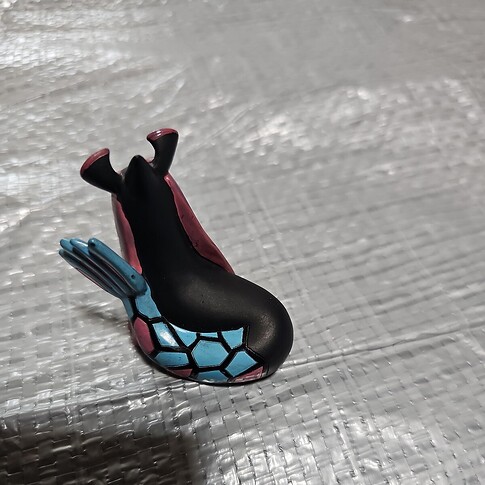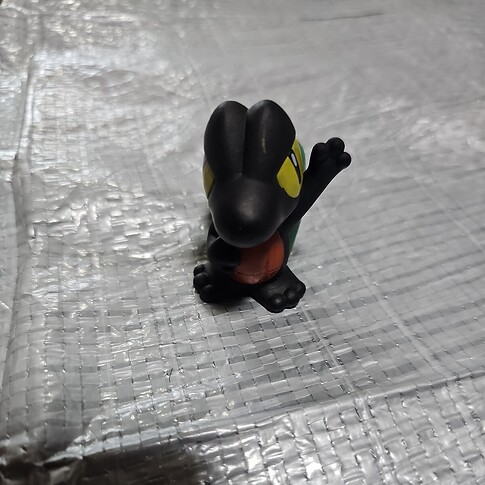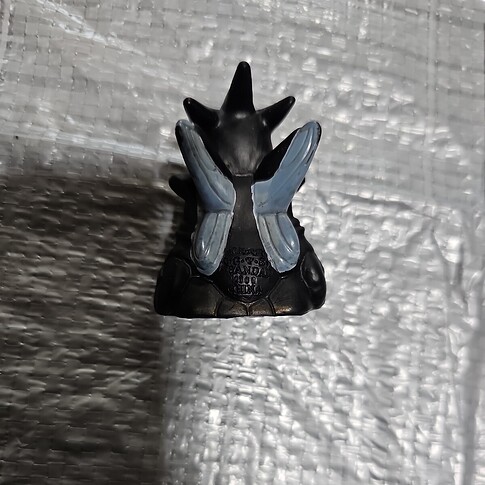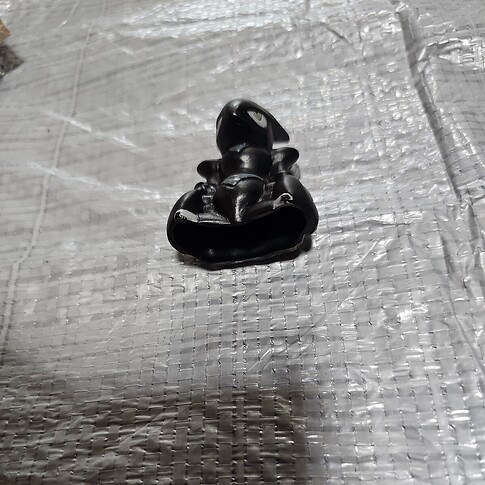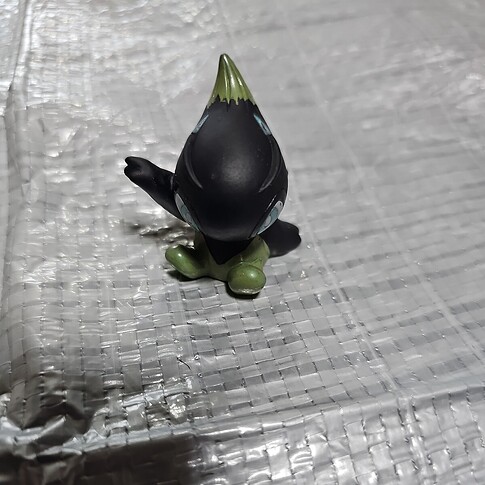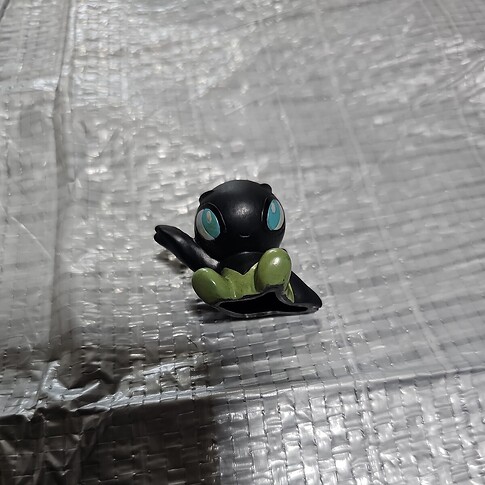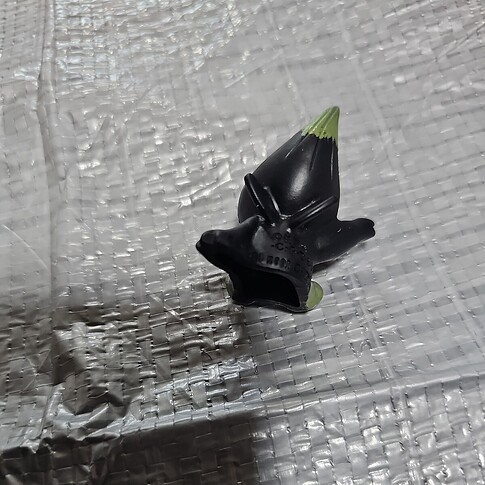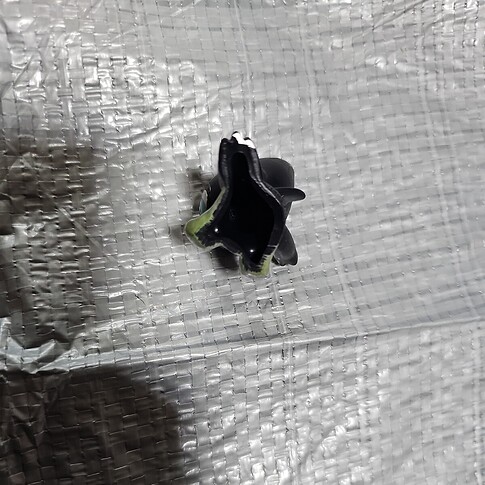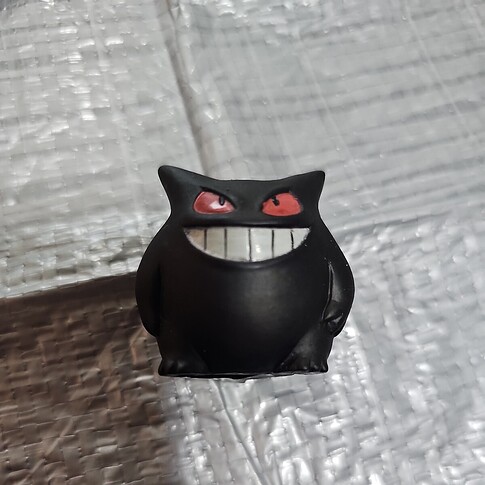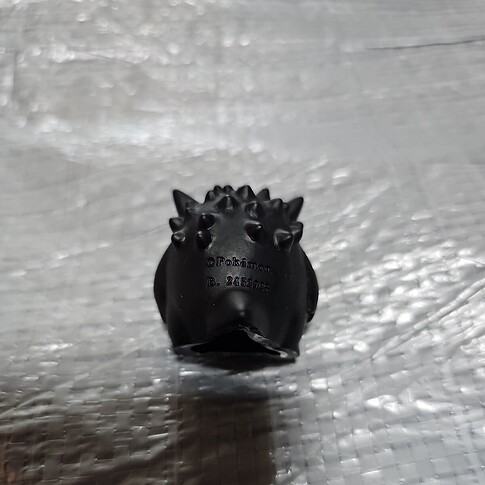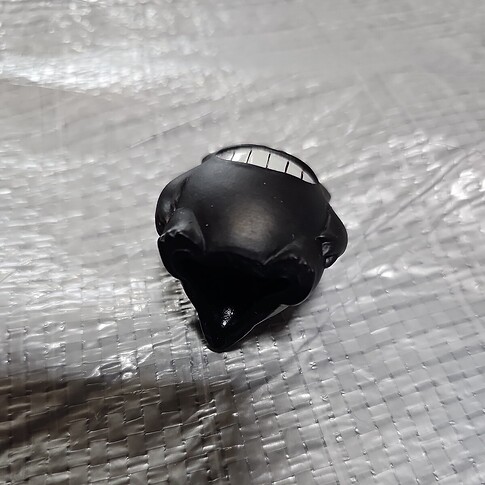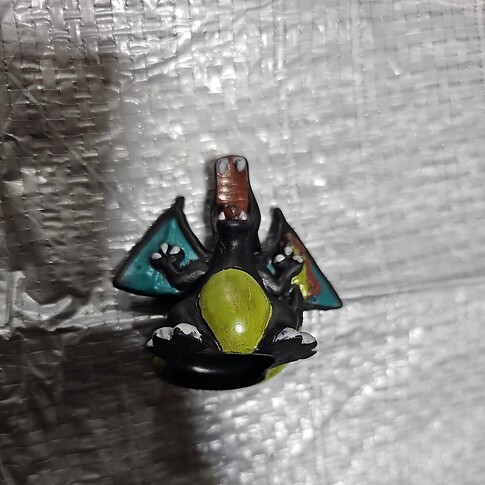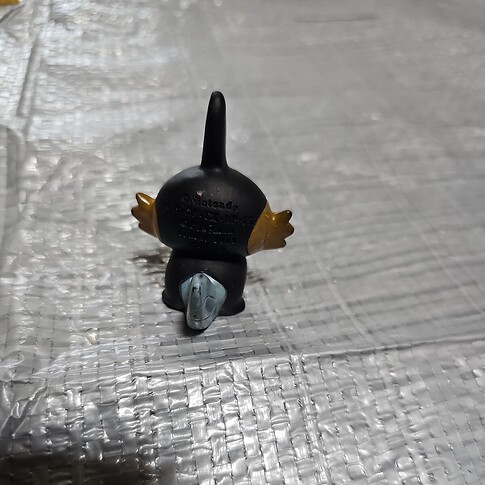Pokémon Kid’s Card Identification Guide (Generation I)
Introduction
The emerging popularity of Pokémon in 1996 led to an abundance of Pokémon-themed products hitting the market in Japan. Among these, the “Pokémon Kid’s” series produced by Bandai stands out. It debuted October 1996 and has continued ever since, with only a brief pause around 2016. This brand, designed as a Pokémon-themed combination product featuring both toys and ‘food’ (shokugan), became a favourite among all types of collectors. This guide aims to help readers identify which releases specific cards belong to, and will also educate them about related nuances and historical aspects.
The first generation boxes contained 1 Figure, 1 card and candy.
The Blind Box Era
The Blind Box Era includes the first three waves of Pokémon Kid’s series releases: Pokémon Kids (I), Pokémon Kids (II), and Pokémon Kids (III). This period is characterised by its distinctive blind packaging (random figure inclusion), expanding figure sets, unique card ‘family photo’ backgrounds, and copyright transition.
Under the bottom left, the text reads:
データはゲーム設定上のものです。
“The data is based on the game settings.”
This era was distinct in the following ways:
-
Blind Boxes: The packages were referred to as blind boxes because neither the figure nor the card inside was known to the purchaser. The identity of the figure inside was not indicated on the packaging. Subsequent waves had clear indicators of the figure inside, addressing complaints about the blind boxes.
-
Expanding Figures: Each wave built on the previous, adding new figures while retaining those from earlier waves.
-
Pre-Anime Release: Released before the Pokémon anime aired in Japan (April 1997), these products targeted early game fans.
-
Staged Backgrounds: The card backs featured staged scenes with props, which were simplified in later releases.
-
Copyright Variations: Different waves had varying copyright information, with Pokémon Kids (III) containing both original and updated versions for each card.
The book Pokémon Kids Perfect Collection – Bandai Official Fan Book ( ポケモンキッズ パーフェクトコレクション【バンダイ公式ファンブック】) published by Shogakukan, in collaboration with Bandai; and Planned, composed and authored by Hidenori Kusaka and others, identifies the blindbox distinction from the other parts.
クローズドパッケージで中身が選べなかった(キッズパート1~3)時期、シリーズのリストを確認する方法は商品を買ってカードの裏を見る他はなかったんだ。この新ポケモンキッズパート1から商品はオープンパッケージになり、ラインナップも箱の横に書かれるように変更されたんだよ。
During the time when it was not possible to choose the contents (Kids Part 1-3) with closed [blind] packages, the only way to check the list of the series was to buy the product and look at the back of the card. From this new Pokémon Kids Part 1, the products have become open packages, and the lineup is now written on the side of the box.
Wave Breakdown
First Wave (Pokémon Kids I):
- Figures and Cards: Purchasers could obtain one of 8 available figures and one of 36 initial cards.
- Copyright: Contains the original copyright information on the front.
rainbow note
I have personally confirmed that all 36 cards exist in this order. It took much longer than you would imagine. It’s easy to presume that upon seeing the majority of cards in this part, they were all sequential. However, I am relieved to have been able to confirm them.
Second Wave (Pokémon Kids II):
- Expanded Figures offering: Added 12 new figures to the original 8, making 20 figures in total.
- Card availability: Increased from 36, to the complete 151 to complete the Pokémon depictions (while not confirmed, this appears to be true as I’ve seen cards featuring the start middle and end- although comprehensive verification is limited due to low volume.
- Back Design: The cards featured a new staged family photo containing 20 figures and a checklist.
- Copyright: Contains the original copyright information on the front.
Third Wave (Pokémon Kids III):
- Expanded Figures offering: Included 35 figures (8 from the first wave, 12 from the second, and 15 new ones).
- Copyright: Featured two copyright versions (original and updated), indicating different print runs.
- Back Design: The cards featured a new staged family photo containing 35 figures and a checklist. The high number of figures crammed into the scene led to the decision to simplify in future waves (by refreshing figure offerings completely).
A box opening of part 3 (updated copyright version) is available for viewing on youtube.
Transition from Blind Boxes
The shift from blind boxes occurred due to consumer feedback. The following translated excerpt from mee-chan details the change:
“By the way, you cannot tell what is inside this product. So children often opened it with their fingers to see what is inside, and complaints poured in. From the next series onward, they started to write what was inside. But then, only popular characters would sell…”
Why did releases expand on each other to begin with?
This likely served a few purposes:
-
It allowed new additional figures to become available to those who had already purchased the initial wave, while remaining accessible to newcomers as the first part was likely short produced/printed, as new releases superseded each other after only a couple of months.
-
It was also likely an attempt to gain additional sales by watering down the odds of getting the figures and cards desired, leading to more purchases occurring by fans in order to catch them all.
-
It also provided time to expand the tooling and designs required for manufacturing the rest of the line of figures and cards to include more characters into the following releases.
Pokémon Kid’s Release Dates
The series had release dates set as months, which meant they were able to be sold from that point. The consumer, however, may not have been able to purchase them at the start of the month in some stores as the roll out was not co-ordinated across all stores. The supporting documentation containing the starting release dates of this period can be viewed on my post containing the ‘Verified Timeline of Pokémon Card release dates (1996)’. The full list of release dates of this time is contained in the attached Visual Identification Guide.
General Characteristics of the Cards
- Targeted at Younger Kids: Designed to appeal to young Pokémon fans.
- Bright Colourful Designs: The cards feature vivid, eye-catching artwork.
- Slightly Smaller Form Factor: The cards are slightly smaller than standard trading cards.
- Late Storage Support: An official binder would not become available until much later into the series.
- High Refresh Rate, Low Initial Production Run: Cards were frequently updated with limited release print runs due to the high refresh rate of releases.
- Not the Sole Focus: The cards were secondary to the figures in the product lineup.
- Firm Single Layer Card Stock: Unlike the TCG cards, these were made from a single layer of firm cardstock.
Why Are They Often Forgotten?
- Targeted at Younger Kids: The primary audience was very young, leading to a high attrition rate.
- Overshadowed by Figures: The collectible figures were more interactive and were marketed than the included cards.
- Collecting Stigma: There was a stigma attached to collecting these cards beyond a certain age, harsher than that for TCG cards, which had a broader audience.
- Condition of Surviving Cards: Most cards from this era are in poor condition due to their young owners.
Despite being overshadowed by the figures, these cards capture the essence of the Pokémon experience, acting as a time capsule for a simpler time. The bright, vivid designs and slightly smaller form factor specifically target younger fans, a demographic distinct from the TCG’s audience. Unfortunately, this focus on younger children has meant that many surviving cards are in less-than-ideal condition, likely due to the wear and tear of enthusiastic love.
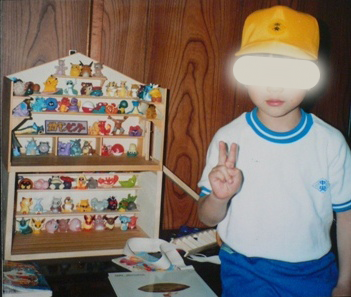
rainbow tangent
Kids are known for their dexterity and care. I chuckled watching this kid open a modern box, but their reaction to these woopers’ faces is adorable (they aren’t the same person as in the photo above).
Card sizing
The first thing you notice about the cards in this series is the slightly smaller form factor of the cards which has been tailored to be handled by smaller children.
Special Collectors’ Binders
Collectors could store their cards in a purpose-made binder designed for the first generation of Pokémon Kids (1 of each 151 cards). To receive the binder, collectors had to enter a lottery by filling out a form and attaching proof of purchase(s) for 500 yen worth of Pokémon Kids products. In 1998, five drawings occurred in succession:
- May: 2,450 binders
- June: 2,450 binders
- July: 2,450 binders
- August: 2,450 binders
- September: 2,450 binders
In total, 12,250 binders were distributed. These lottery drawings occurred towards the end of the 1st generation, beginning 1 year and 7 months after the first release, and 8 waves into the generation.
The binder acknowledges its release timing, within the title of the front and back cover, stating it is [for use with] the New Pokemon Kids Series card collection file (which started releasing May 1997).
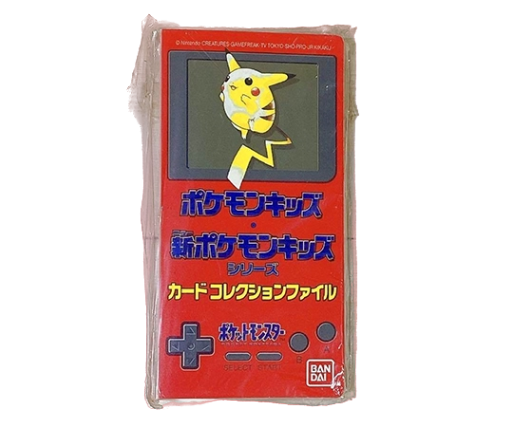
ポケモンキッズ
・
新ポケモンキッズ
シリーズ
カードコレクションファイル
Pokemon Kids
•
New Pokemon Kids
Series
Card Collection File
The following youtube video showcases the binder and cards.
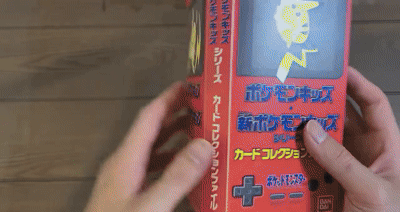
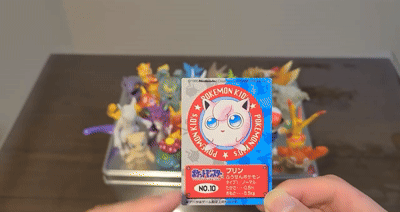
Here are additional photos provided by @cullers.
In the lead-up to the lottery drawings, the back sides of some cards were switched out to include a different card. It is unclear which releases alternated with use of these.
Gen 1 - Box & Card Visual Identification Guide
The following is a Visual Identification Guide I created for users to easily understand which releases their cards came from.
You will notice part 3 states there are 302 cards and this is when both copyright variations are taken into consideration. While I have no documented evidence of this number, I have seen the vast majority of them myself and have no reason to presume the number is incorrect.
However, overall, if you can’t find your favourite Pokémon from a particular release, please don’t @ me in frustration, prematurely suggesting that it wasn’t printed in xyz. It’s far more likely that they are just hard to find or no longer available, as the release windows were very short before being refreshed.
Pokémon Kid’s 300 Million Milestone and First Generation Reissue
In celebration of the Pokémon Kid’s series reaching an incredible milestone of 300 million units sold, Bandai’s Candy Division announced the upcoming release of the “Pokémon Kids (First Generation Reissue)” for December 3, 2018. This reissue, which had its figures decided based on fan votes, brought back some of the most beloved figures and cards from the original series.
The fan vote for determining which figures would be featured, opened 12 June 2018 and concluded on June 25 2018, with votes being submitted both online and at the Next Generation World Hobby Fair of summer ‘18, with final votes totalling 94,850 votes.
This youtube video briefly shows the fair and recaps of items received by the youtuber at the event. The youtuber received a paper version of instructions for voting online, which shows the original 151 figures from the first generation.
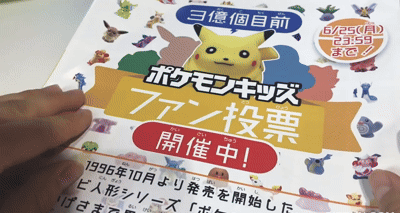
The youtuber ゆずみん uploaded a video demonstrating the process of voting online (they were fielding votes for their choice of Victreebel).
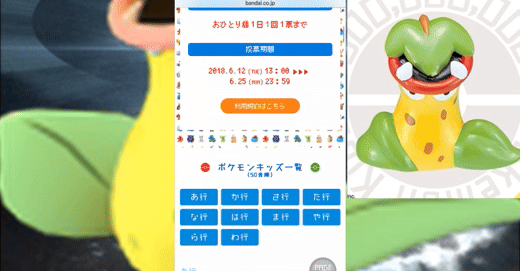
On July 19 2018, shortly after the conclusion of the voting period, a representative (likely Ms. Nakaya ) of the candy division planning the release, announced on twitter that they were currently considering which cards to include:
I’m currently considering the line-up of cards that will come with the
Pokemon Kids (first generation reprint) soft vinyl dolls… Hmmm, all of
them are attractive… I’m torn…, Random inclusions that don’t
match with [included] soft vinyl dolls, about 20 types in all are under
consideration.
Side note: those with a keen eye would have noticed that 14 out of the 22 cards shown are able to be confirmed as originating from the blind box era.
Product Details
Pokémon Kids (First Generation Reissue) included:
- Figures: The reissue featured 10 figures from the original series, including fan favorites like Pikachu, Eevee, Charizard, and Mewtwo, plus a secret figure (mew), making a total of 11 figures.
- Packaging: The contents were enclosed in boxes reminiscent of the original design, available in five colors: white, yellow, green, red, and black. This design choice closely mimicked the originals and added a nostalgic touch for long-time fans.
- Cards: Each box contained one random card out of a set of 24, a mini set to promote nostalgia for the originals.
These cards are discernable from the original era in a number of ways:
-
The front sides contain a different set of copyright information, and the colours have been printed slightly different to those prior.
-
The back sides imitate the original first part in design, containing a different family photo and checklist, and stating their production occurred in China.
Card Grading
As far as I am aware, all of the big 3 grading companies are grading at least some of the series. With PSA recently starting to grade part one.
CGC is trying, but their title leaves a lot to be desired.
As does BGS, with slabs not stating the difference between parts, only years. I can’t see a pop report to link from their website.
Conclusion: A Legacy for Kids and Collectors Alike
While initially overshadowed by the collectible figures they accompanied, the Pokémon Kid’s cards from Generation 1 have secured a place in the hearts of Pokémon enthusiasts and collectors. Their vibrant charm, unique format, and nostalgic value offer a glimpse into the early days of the franchise, a time when Pokémon was just beginning its global takeover.
Though many cards from this era may bear the marks of time and enthusiastic play, their significance remains. The Pokémon Kid’s series, with its blind boxes, evolving figure roster, and charming cards, provided a unique entry point for young fans, fostering a love for Pokémon that continues to this day.
Whether you’re a seasoned collector seeking to complete your set or a newcomer captivated by the series’ history, the Pokémon Kid’s cards (and figures) offer a captivating glimpse into the past and shows how products like these seed the enduring power of Pokémon.
Bonus Material
The Pokémon Kids Perfect Collection – Bandai Official Fan Book contains a colour copy of the original family photo:
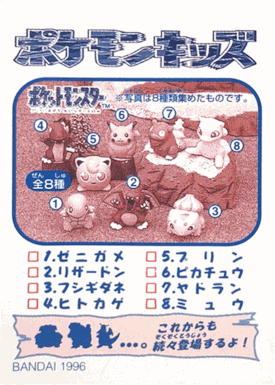
It also shows some interesting tidbits:
Here’s a photo of Bandai’s corporate headquarters in Taitō, Tokyo, back in 06.
Meowth is saying: “This is where Bandai is… There’s Bandai.”
The book itself contains a booklet showing the creation process of the figures at that time, along with general production.
You will have to forgive the photos in place of scans, as I haven’t set up the scanner since I’ve moved.
Other Resources
mee-chan/yubi/ (credited for the figure photo used to illustrate figures relating to the card back sides of the blind box era.
toys.qee.jp (pokemon kids, 1-3)
toys.qee.jp (pokemon kids, beyond
New Pokemon Kids 4 - Advertisement
3D art - This tweet made me laugh.
300m Super Scroll - Visual demonstration of 300 million figures.
